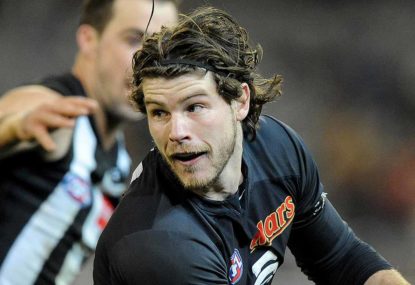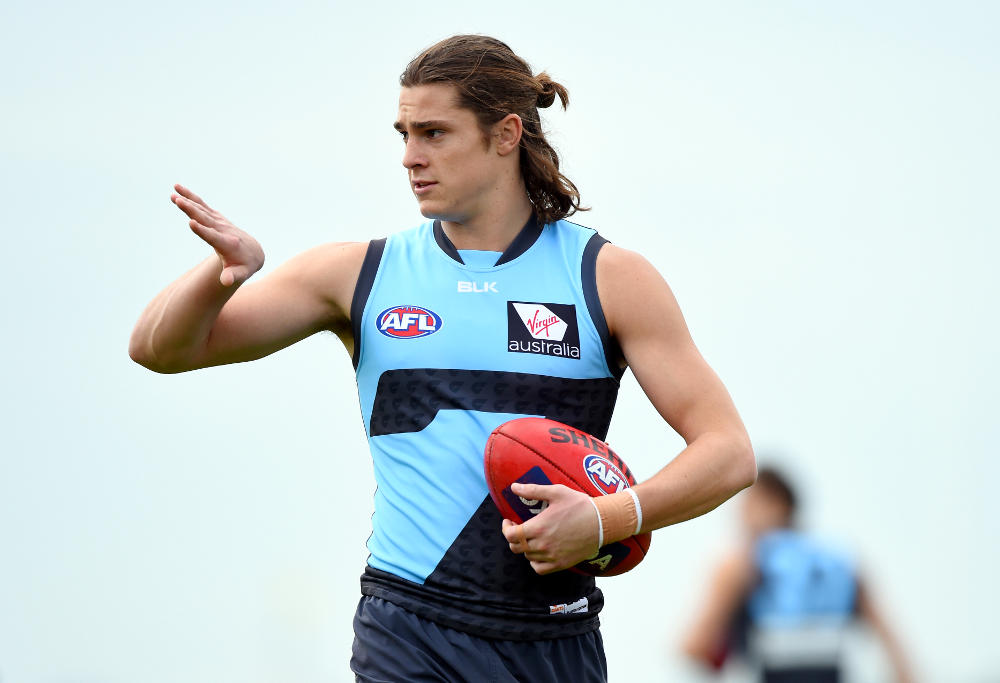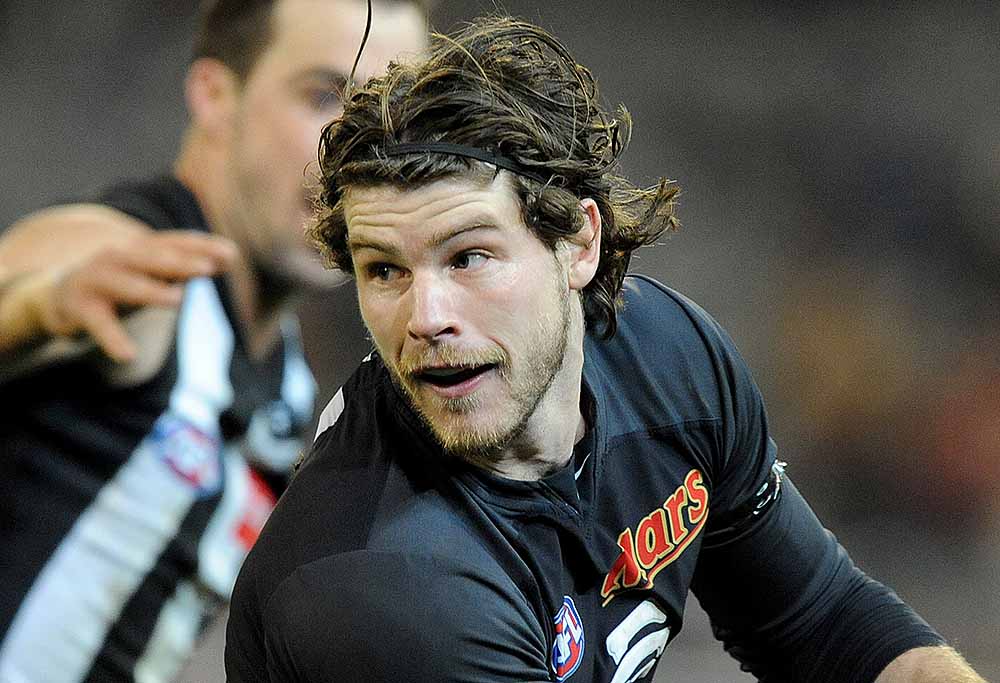The crucial cogs of AFL's Round 7: Which players need to be the difference makers?
We’re taking a look at one player from each team that needs to make a difference this week, starting with the ANZAC Day games.

It was the most unpredictable, shocking and enthralling AFL trade period ever.
As is normal after the trade period, teams are now filled with optimism heading into the preseason. New players bring a sense of confidence with them, and all 18 clubs are bullish on their updated lists.
However, who can exit the trade period with their head held high, and who came out with their tail between their legs?
The winners
Fremantle
The Dockers plugged so many leaking holes in their line-up over the past fortnight.
Cameron McCarthy and Shane Kersten arrive, hoping to fix the Dockers’ constant goal kicking woes and to fill the void left by the retiring Matthew Pavlich and departing Chris Mayne.
After a year off, McCarthy remains a question mark, but a low-risk one. McCarthy flashed his athleticism as a key forward in 2015 with GWS, and will provide Fremantle with a goal kicking threat up front. He booted 35 goals two seasons ago and should feel more comfortable back home.
Similar to McCarthy, Kersten gives the Dockers an athletic forward option. Some poor form late in the year saw Kersten dropped three times after the bye and eventually missing the Cats’ finals campaign.
However, at a club that has few options up front, Kersten should see an increase in both opportunity and production.
Down back, former Bulldog Joel Hamling and the returning Michael Johnson – who was one of a number of Dockers hit by injuries in 2016 – give Fremantle two key pillars to build around defensively. While Brad Hill injects some much-needed speed into the Dockers’ midfield.
Additionally, Fremantle was able to maintain a strong draft profile, with three picks within the top-40, including pick seven.
St Kilda
The Saints went into the trade period with goals in mind and achieved them all.
Not only did St Kilda acquire the trio of Jack Steele, Koby Stevens and Nathan Brown, they did so while also improving their draft position in the future. The Saints managed to keep a pair of second-round picks in this year’s draft – 23 and 36 – and were able to gain Hawthorn’s 2017 first-rounder and the Bulldogs’ 2017 fourth-rounder.
St Kilda’s recruiting staff has a strong track record at the draft. Over recent years, they’ve selected the likes of Jade Gresham, Jack Billings, Maverick Weller and Blake Acres. With more trade ammunition in the future, expect more good decisions to come.
On the field though, St Kilda hopes for immediate contributions from their new triplet of players.
Steele didn’t get much of a chance to cement himself with the Giants, but the NSW/ACT Rams product will get more opportunities at the Saints. The hard-nut midfielder averaged 36 disposals in ten NEAFL games this year, while also proving he can hit the scoreboard with 15 goals.

Stevens is a ball magnet, who after dealing with injury this season, couldn’t retain his spot in the Western Bulldogs side that went on to win the premiership. In his 12 senior games in 2016, Stevens was solid, averaging 22 disposals and five tackles. He will provide some hardness at the coalface.
Nathan Brown brings a premiership pedigree to Seaford, who along with Jake Carlisle, will give the Saints’ defensive stocks a much-needed boost.
Future draft picks
Whose idea was it to introduce the ability for clubs to trade future draft picks? This individual needs a pay rise and an increased role at AFL house.
Of the 39 completed trades, 14 of them involved future draft picks. That’s 35.9 per cent of all deals, including crucial picks that helped get the Jaeger O’Meara and Brett Deledio trades done.
The ability to trade future picks was a long overdue rule brought in by the AFL for the 2015 trade period. It creates more excitement and gives clubs more assets to deal with.
The losers
Adelaide
The Crows began their trade period with so much promise after Bryce Gibbs requested a trade back to West Lakes. It seemed like a perfect fit, as Gibbs would add some much-needed class to a thin Adelaide midfield.
However, a player requesting a trade is one thing. The more important thing is a club getting the deal done.
The Crows failed to do this, and combined with the Jarryd Lyons departure, they leave the trade period empty handed.
Adelaide’s biggest downfall in 2016 was their lack of midfield depth. After their star Rory Sloane, the Crows experienced a significant drop-off in their next tier of midfielders. Going into 2017, there is no reason to believe things will be any different.
Adelaide list manager Justin Reid, along with other prominent figures within the Crows, was publicly upset the Blues didn’t trade Gibbs. The blame though, is on Adelaide and not Carlton.
Gibbs is under contract for another three years at the Blues and was their second-leading vote getter in this year’s Brownlow. There was no reason for the Blues to give him up for what they felt was a lowball offer from Adelaide. The onus in this situation is on the Crows, as they’re the ones who need to offer the Blues an adequate package.

Adelaide still projects as a finals side in 2017 – but one can only dream of their prospects if Gibbs was lining up in Don Pyke’s team. Maybe things will be different in 12 months and the Crows will learn from this year’s mistakes.
Collingwood’s defence
The mass exodus of Magpie defenders was quite surprising.
Brown, Jack Frost and Marley Williams all found new homes, while Alan Toovey retired. Additionally, Jonathon Marsh is unlikely to continue playing football at Collingwood next season due to personal reasons.
The Pies attempted to piece together a contingency plan, ending up with Lynden Dunn, in a move that seemed to be done out of necessity and not preference. Dunn failed to crack into Melbourne’s team in 2016, and entering his 30s, it’s unknown how much he can still produce at AFL level.
None of Collingwood’s other acquisitions – Mayne, Daniel Wells and Will Hoskin-Elliott – are defenders. This leaves the Magpies very thin in defence, which is a worry, considering how easily Nathan Buckley’s spatial defensive system was cracked by the opposition last season.
The Magpies are expecting to make the finals in 2017, but with a shaky defence, they’re already behind the eight ball.
One-club loyalty
While the idea of one-club players has been slowly fading in the AFL for years, the 2016 trade period only advanced its demise.
If you said before the trade period that Sam Mitchell and Jordan Lewis wouldn’t be donning brown and gold for the remainder of their careers, people would have called you mad. If you even suggested the Hawks would trade Mitchell and Lewis this year, you’d probably be referred to a psychologist. Yet that’s exactly what happened.
While the Mitchell and Lewis trades benefit all parties involved, it’s sad to see one of the AFL’s last remaining unique qualities be, for all intents and purposes, abolished.